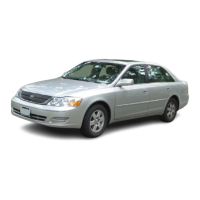Do you have a question about the Toyota All Models and is the answer not in the manual?
Check coolant level after engine cools and fill radiator as required. Refer to Owner's Manual for fill specifications.
Steps to diagnose engine running hot or overheating, including checking coolant, hoses, and radiator for leaks.
Action to take when the "Check Engine" light illuminates on the vehicle: seek dealer diagnosis and repair.
Lists additional information sources, general cautions, and critical safety notices for vehicle maintenance.
Lists all necessary tools, genuine Toyota parts, and safety equipment for thermostat replacement.
Identifies specific Toyota models that may present difficulties during thermostat service.
Explains the typical location of the thermostat housing on the engine where the upper radiator hose connects.
Steps to disconnect the battery and drain engine coolant safely before proceeding with thermostat replacement.
Detailed steps for removing the old thermostat, cleaning the housing, installing the new thermostat and gasket.
Instructions for reassembling parts, filling with coolant, bleeding air, and checking for leaks after replacement.
Check coolant level after engine cools and fill radiator as required. Refer to Owner's Manual for fill specifications.
Steps to diagnose engine running hot or overheating, including checking coolant, hoses, and radiator for leaks.
Action to take when the "Check Engine" light illuminates on the vehicle: seek dealer diagnosis and repair.
Lists additional information sources, general cautions, and critical safety notices for vehicle maintenance.
Lists all necessary tools, genuine Toyota parts, and safety equipment for thermostat replacement.
Identifies specific Toyota models that may present difficulties during thermostat service.
Explains the typical location of the thermostat housing on the engine where the upper radiator hose connects.
Steps to disconnect the battery and drain engine coolant safely before proceeding with thermostat replacement.
Detailed steps for removing the old thermostat, cleaning the housing, installing the new thermostat and gasket.
Instructions for reassembling parts, filling with coolant, bleeding air, and checking for leaks after replacement.
| Brand | Toyota |
|---|---|
| Model | All Models |
| Category | Automobile Parts |
| Language | English |












